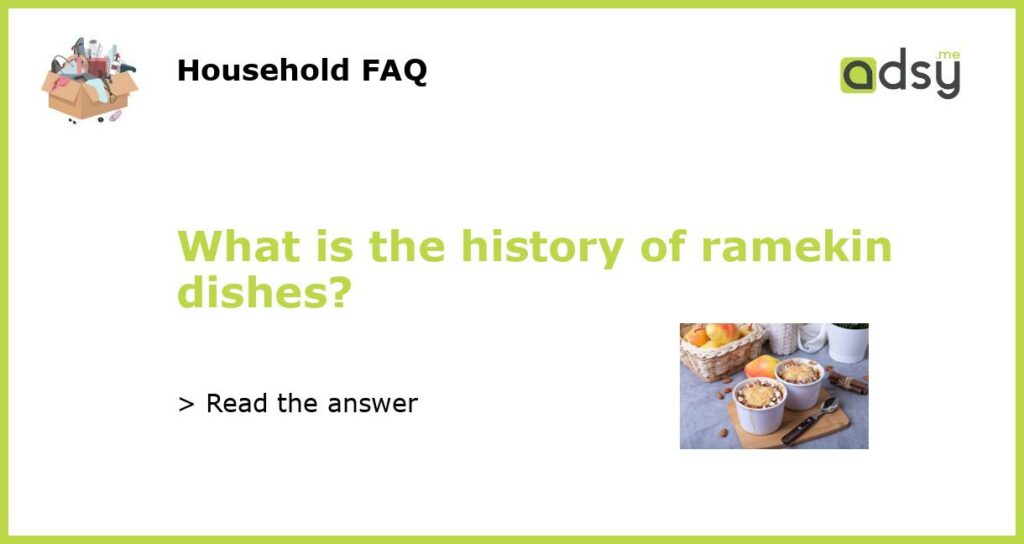The Origins of Ramekin Dishes
Ramekin dishes have a long and interesting history that dates back centuries. These small, individual serving dishes have become popular for both savory and sweet dishes, and can be found in kitchens and restaurants around the world. Let’s explore the origins and evolution of ramekin dishes.
Ancient Origins: The First Ramekin Dishes
The history of ramekin dishes can be traced back to ancient times. The earliest known examples of small individual dishes similar to ramekins can be found in ancient Roman and Greek cultures. These dishes, made of terracotta or clay, were used to prepare and serve a variety of dishes such as cheese, custards, and even sweet desserts.
During the Middle Ages, ramekin dishes evolved and became more popular in Europe. The name “ramekin” is said to have originated from the French word “ramequin”, which referred to a cheese dish. Ramekins were often used to serve small portions of cheese, which were a delicacy at the time.
The Renaissance and Ramekin Dishes
During the Renaissance period, ramekin dishes continued to gain popularity in Europe. They were often made of porcelain or ceramic, which were more durable and aesthetically pleasing than the earlier terracotta versions. Ramekins were not only used for serving cheese, but also for a wide range of savory and sweet dishes.
The popularity of ramekin dishes grew during this time, especially among the upper classes. They were considered a sign of wealth and sophistication, as they allowed for individual portions to be served in a tasteful and elegant manner.
Ramekin Dishes in Modern Times
As time passed, ramekin dishes became more widely available and affordable. They could be found in kitchens of all classes and were used for a variety of dishes. In the 19th century, ramekins became particularly popular in England, where they were used to make and serve individual baked custards and soufflés.
In the 20th century, ramekin dishes continued to evolve and were adapted to suit modern cooking techniques and tastes. Today, ramekins are made from a variety of materials, including porcelain, ceramic, and glass. They come in various shapes and sizes, allowing for versatility in serving both savory and sweet dishes.
The Popularity of Ramekin Dishes Today
Ramekin dishes have remained popular throughout the centuries and are still widely used today. They have become a staple in both home kitchens and professional restaurants, thanks to their versatility and aesthetic appeal.
Modern chefs and home cooks use ramekins for a range of dishes, from individual desserts like crème brûlée and molten chocolate cake, to savory dishes like individual pot pies and soufflés. Ramekins also add a touch of elegance to table settings, making them a popular choice for dinner parties and special occasions.
In conclusion
The history of ramekin dishes is a fascinating journey that spans centuries and crosses continents. From their humble beginnings in ancient Rome and Greece to the present day, ramekins have evolved and adapted to suit the culinary preferences of different cultures and time periods. Today, ramekin dishes continue to be a popular and versatile tool in the kitchen, adding a touch of elegance to any meal.






